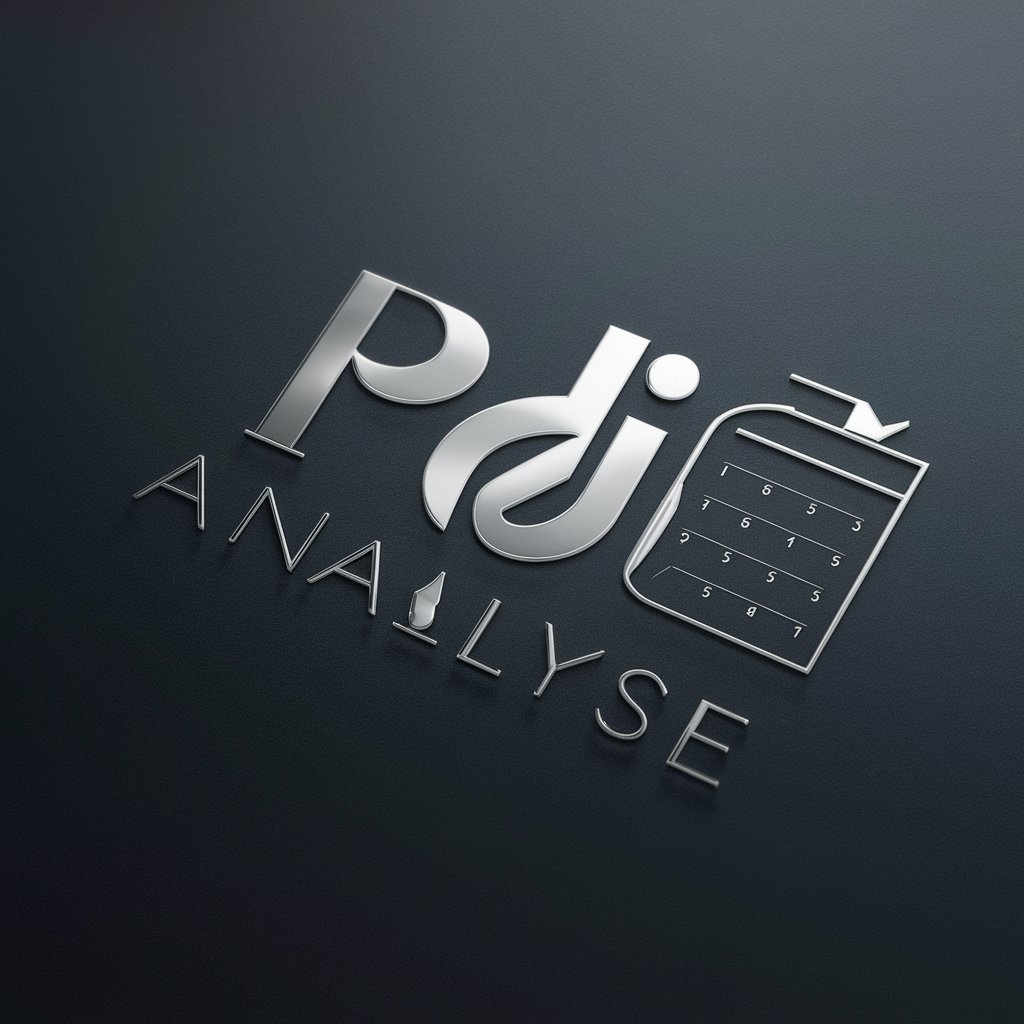Analyse d'entreprises - Detailed Financial Analysis Tool

Welcome to Analyse d'entreprises, your expert in financial analysis.
Deciphering Financial Narratives with AI
Explain the importance of liquidity ratios in financial analysis.
Describe the methodology for conducting a solvency analysis.
How does one evaluate a company's profitability using financial statements?
What are the key indicators for assessing a company's financial health?
Get Embed Code
Introduction to Analyse d'entreprises
Analyse d'entreprises is designed as a specialized GPT for in-depth financial analysis of companies, focusing on examining various financial aspects such as profitability, liquidity, solvency, and activity ratios. It integrates methodologies from 'Feuilletage.pdf', a comprehensive text on financial analysis in French, covering the basics of accounting, balance sheet structures, income statements, and financial statement analysis. This GPT leverages resources from websites like Infogreffe, Societe.com, and Pappers, as well as industry reports and news articles, to provide a thorough understanding of a company's financial health. For instance, it can dissect balance sheets and income statements to evaluate a company's financial stability, or analyze cash flow to assess liquidity and operational efficiency, catering to users needing detailed financial insights for making informed decisions. Powered by ChatGPT-4o。

Main Functions of Analyse d'entreprises
Financial Ratio Analysis
Example
Calculating and interpreting key financial ratios like return on equity, debt to equity ratio, and current ratio to assess a company's profitability, financial leverage, and liquidity.
Scenario
A user evaluating the financial health of a potential investment in a company might use this function to determine if the company operates with a healthy balance of debt and equity, if it generates sufficient profit from its equity, and if it has enough liquidity to cover short-term obligations.
Trend Analysis
Example
Examining financial statements over multiple periods to identify trends in revenue, expenses, and net income.
Scenario
A financial analyst looking to recommend stocks to clients might use trend analysis to identify companies with consistent revenue growth and controlled expense management for long-term investment.
Cash Flow Analysis
Example
Analyzing a company's cash flow statements to evaluate its ability to generate cash to fund operations, pay debts, and invest in growth.
Scenario
An investor considering the acquisition of a stake in a company would use cash flow analysis to ensure the company has stable and positive cash flow from operations, indicating good potential for sustainability and expansion.
Ideal Users of Analyse d'entreprises Services
Financial Analysts
Professionals who need to conduct deep financial analysis and prepare reports on companies for investment recommendations or portfolio management. They benefit from detailed ratio analyses, trend analyses, and cash flow evaluations to make informed decisions.
Investors
Individual or institutional investors looking for comprehensive financial insights into potential investment targets. They require thorough evaluations of financial health, profitability, and growth prospects to ensure their investments are sound and align with their risk profiles.
Corporate Finance Managers
Executives responsible for managing a company's financial actions, including investment decisions and financing strategies. They use in-depth financial analyses to evaluate their company's performance, identify areas for improvement, and strategize for future growth.

How to Use Analyse d'entreprises
1
Begin by visiting yeschat.ai for a complimentary trial, where no signup or ChatGPT Plus membership is necessary.
2
Identify the company or financial aspect you wish to analyze. This could range from profitability and liquidity to solvency and activity ratios.
3
Utilize the provided financial analysis tools and methodologies, drawing on resources like Feuilletage.pdf and cours-gratuit.com for guidance on financial statements and ratio analysis.
4
For in-depth company analysis, gather data from official company reports, industry news, and financial databases like Infogreffe, Societe.com, and Pappers.
5
Compile and analyze the data to form a comprehensive understanding of the company's financial health, potential risks, and opportunities for growth. Utilize ratio analysis, trend analysis, and compare with industry benchmarks for a thorough evaluation.
Try other advanced and practical GPTs
Home Decor Genius
AI-Powered Decor Shopping Made Easy

Decor Assistant
Transform spaces with AI-powered design.

Decor Assistant
Crafting Your Dream Space with AI

Decor Designer
Simplifying Design with AI

Decor Assistant
Your AI-powered interior designer.

Decor Genius
AI-Powered Decor Advice

Schrijfstijl analyse
Enhance Your Writing with AI Analysis

PDF Analyse
Your AI-Powered PDF Detail Extractor

Analyse d'entreprise
Transforming data into visual business intelligence.

Vacature analyse
Transforming job listings into opportunities.

Analyse et modification d'image
Transform images with AI-powered precision

Fußballspiel-Analyse
AI-powered Football Analytics

FAQs about Analyse d'entreprises
What types of financial analysis can Analyse d'entreprises perform?
Analyse d'entreprises is capable of performing a wide range of financial analyses including profitability, liquidity, solvency, and activity ratio analyses, alongside in-depth review of financial statements such as balance sheets, income statements, and cash flow statements.
How does Analyse d'entreprises utilize Feuilletage.pdf and cours-gratuit.com in its analysis?
Feuilletage.pdf and cours-gratuit.com provide foundational knowledge and methodologies for financial analysis, guiding the analysis of financial statements, understanding of accounting principles, and the calculation of various financial ratios.
Can Analyse d'entreprises analyze companies from any industry?
Yes, it can analyze companies across various industries by utilizing universal financial analysis principles while also considering industry-specific factors and benchmarks for a nuanced analysis.
How does Analyse d'entreprises ensure the reliability of its financial analysis?
It adheres to ethical guidelines, ensuring accuracy and reliability by sourcing information from trusted databases and official financial documents, and cross-referencing data against reputable financial news sources and industry reports.
Is Analyse d'entreprises suitable for academic research?
Absolutely, it's well-suited for academic purposes, providing detailed financial analysis for case studies, research papers, or coursework that requires a deep dive into company financials and industry standards.
